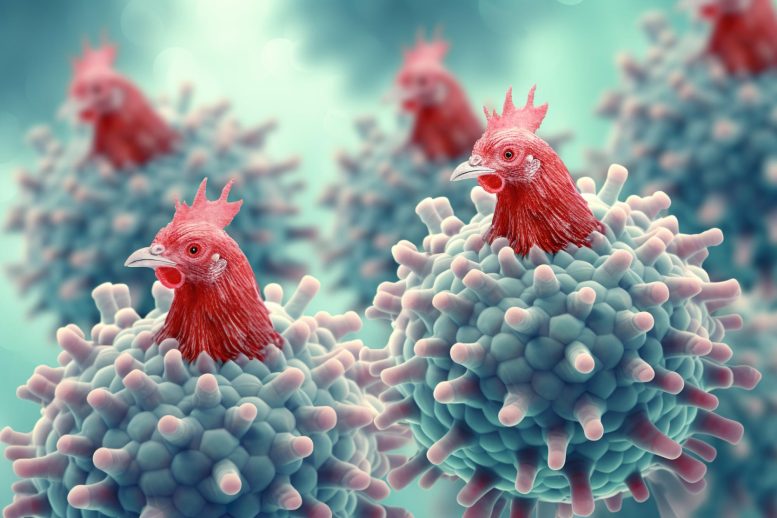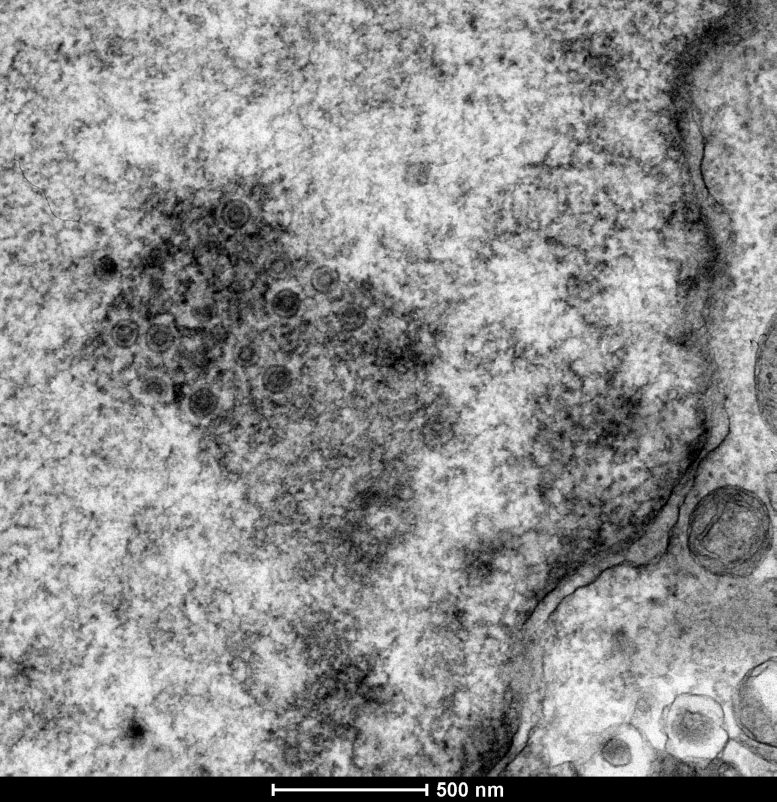
An international team has used ancient DNA to study the evolution of the Marek’s Disease Virus, discovering its increased virulence over time and providing insights that could lead to better disease management in poultry. This groundbreaking research emphasizes the value of archaeological findings in understanding and combating viral diseases.
A group of scientists from around the world, including geneticists and disease biologists from the University of Oxford and LMU Munich, have utilized ancient DNA to study the evolutionary history of Marek’s Disease Virus (MDV), a worldwide pathogen responsible for deadly infections in chickens that are not vaccinated, leading to annual losses exceeding $1 billion for the poultry sector. Their research, which was recently published in the journal Science, illustrates the ways in which viruses can become increasingly harmful over time. This insight could pave the way for improved treatments for viral infections.
The team, which includes archaeologists and biologists, recovered and reconstructed ancient MDV sequences from archaeological chickens spanning the past 1,000 years. By comparing viral genomes derived from both modern and ancient birds, they were able to pinpoint the genetic alterations responsible for the increased virulence of the modern virus.
Based on the ancient genetic sequences, they were also able to resurrect ancient biological processes using cellular assays, demonstrating that ancient strains were significantly milder than their modern counterparts.
This breakthrough not only sheds light on the evolutionary history of MDV, but also holds promise for the development of more effective therapies against this devastating poultry disease.
Historical Context and Evolution of MDV
This new study is based on DNA isolated from chicken bones that were excavated from 140 archaeological sites in Europe and the Near East. These ancient genomes revealed that MDV was widespread in European chickens at least 1,000 years before the disease was first described in 1907. This highlights the importance of preserving archaeological remains, especially given their power to reveal valuable insights into the evolution of virulence.

Electron Microscopy image of Marek’s disease virus particles replicating in the nucleus of an infected cell. Credit: The Bioimaging group, Pirbright Institute.
When first described, this disease only led to mild symptoms in older chickens. As chicken consumption dramatically increased in the 1950s and 1960s, MDV has continued to evolve and has become increasingly aggressive despite the development of several vaccines.
Contributions and Future Implications
First author Dr Steven Fiddaman (Department of Biology, University of Oxford) said: “Our findings not only unravel the evolutionary history of the Marek’s Disease Virus but also provide a foundation for enhancing our current understanding of pathogen virulence. By combining ancient DNA techniques with modern genomics, we’ve opened a window into the past that can guide future strategies in managing viral diseases.”
Professor Naomi Sykes (University of Exeter), lead archaeologist on the study, stated: “This study underscores the profound significance of biological material preserved in archaeological and museum collections since we cannot foresee how their investigation might possess transformative applications in the future.”
Professor Laurent Frantz (LMU Munich), co-senior author of the study stated: “Our work highlights the power of interdisciplinary collaboration, bringing together paleogeneticists, virologists, archaeologists, and biologists to unravel the complex evolutionary history of a pathogen with significant economic and agricultural implications.”
Professor Greger Larson (University of Oxford), co-senior author commented: “We have seen how mitigating diseases often creates a selection pressure that increases the virulence of the virus. Being able to watch this process take place by sequencing ancient virus genomes shows just how dramatically the virulence of MDV has increased in the past century.”
Professor Adrian Smith (Department of Biology, University of Oxford), co-senior author said: “Ancient DNA has provided us with a unique perspective on the emergence of MDV as a deadly chicken virus and may teach us lessons that are applicable to the control of other viral infections of medical and veterinary importance.”
Professor Venugopal Nair, Scientist Emeritus at The Pirbright Institute, said: “Findings from this paper on the origins of virulence, particularly associated with the genetic sequences of the ancient Marek’s disease viruses, will provide great scientific opportunities to explore the molecular mechanisms of increasing virulence of this virus that coincided with the intensification of poultry farming from the 1960s.”
Reference: “Ancient chicken remains reveal the origins of virulence in Marek’s disease virus” by Steven R. Fiddaman, Evangelos A. Dimopoulos, Ophélie Lebrasseur, Louis du Plessis, Bram Vrancken, Sophy Charlton, Ashleigh F. Haruda, Kristina Tabbada, Patrik G. Flammer, Stefan Dascalu, Nemanja Marković, Hannah Li, Gabrielle Franklin, Robert Symmons, Henriette Baron, László Daróczi-Szabó, Dilyara N. Shaymuratova, Igor V. Askeyev, Olivier Putelat, Maria Sana, Hossein Davoudi, Homa Fathi, Amir Saed Mucheshi, Ali Akbar Vahdati, Liangren Zhang, Alison Foster, Naomi Sykes, Gabrielle Cass Baumberg, Jelena Bulatović, Arthur O. Askeyev, Oleg V. Askeyev, Marjan Mashkour, Oliver G. Pybus, Venugopal Nair, Greger Larson, Adrian L. Smith and Laurent A. F. Frantz, 14 December 2023, Science.
DOI: 10.1126/science.adg2238









Could be the “Vaccines” helped bring about the increased virulence, as the virus had to evolve a defense to survive.